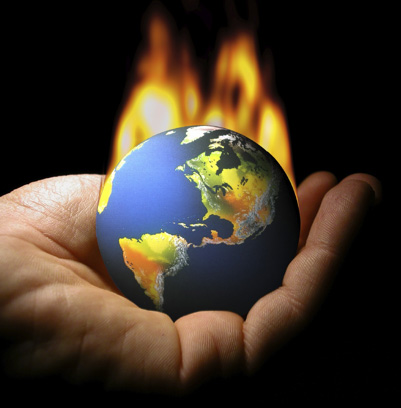In a new climate study, the National Aeronautics and Space Administration ranked 2020 in a dead heat with 2016 as the warmest year since official record-keeping began in 1880. The record-tying warmth came despite a cooling La Niña Pacific Ocean current, which tamped down global temperatures slightly in December.
In a separate assessment released at the same time, the National Oceanic and Atmospheric Administration, which relies on slightly different temperature records and methods, calculated that the globally averaged temperature last year was the second highest to date—just 0.04°F shy of tying the record set in 2016.
“These long-term trends are very, very clear,” said Gavin Schmidt, director of NASA’s Goddard Institute for Space Studies in New York. “This is another piece of evidence that tells us the planet is warming decade by decade by decade.”
NASA and NOAA scientists labeled 2020 a year of extremes, driven by rising levels of greenhouse gases such as carbon dioxide and methane that trap heat in the atmosphere.
At times last year, the Arctic averaged 12 degrees Fahrenheit above normal, with some spots hitting temperatures of up to 100 degrees F. Record wildfires in the U.S. and Australia burned millions of acres and spewed smoke plumes high into the stratosphere. There were more named Atlantic storms than ever before. Heat building up in the ocean matched the record set in 2019, the federal scientists said.
The federal research follows independent assessments of 2020 by climate agencies in Europe and Japan. The Copernicus Climate Change Service, which provides climate analytics to European Union member countries, last week said the year was on par with the warmest ever recorded. In its preliminary analysis of global temperatures, the Japan Meteorological Agency said global temperatures in 2020 were the highest in their records.
Reliable climate record-keeping began in 1880. Since then, the annual global temperature has risen at an average rate of 0.14°F per decade, the NOAA scientists said. Since 1981, the average rate of increase has been more than twice as high.
“It seems to me that the rate of increase is perhaps accelerating a little bit,” said Russell Vose, chief of the analysis and synthesis branch of the National Centers for Environmental Information in Asheville, N. C., which conducted NOAA’s analysis.
The seven warmest years so far all occurred since 2014, the NOAA and NASA scientists said. Taken together, the past decade was the warmest world-wide on record, overtaking a record set by the previous decade, both NOAA and NASA scientists said. Each of the past four decades has been warmer than the one that preceded it.
Hundreds of studies and scientific reports have shown that high levels of greenhouse gases in the atmosphere are the leading cause of increasing global temperatures, although some dispute those findings.
Carbon dioxide emissions from fossil fuels fell about 7% last year as a result of reduced travel during the Covid-19 pandemic, according to the Global Carbon project, an international research consortium that tracks emissions world-wide. Even so, the level of CO2 in the atmosphere is now higher than at any time in the past 800,000 years, according to the U.K.’s Met Office, which tracks climate change.
The newly released annual global temperature rankings are based on millions of weather observations recorded each day. But the planet doesn’t warm evenly, the scientists said.
In the Northern Hemisphere, last year’s averaged land and ocean surface temperature was the highest in the 141-year record, at 2.30°F (1.28°C) above the 20th century average, according to NOAA. The annual Southern Hemisphere land and ocean surface temperature was the fifth highest on record.
Europe and Asia last year were each the warmest on record. North America had its 10th-warmest year on record.
In the contiguous U.S., last year ranked as the fifth-warmest year on record. The five warmest years on record have all occurred since 2012, NOAA scientists said.













